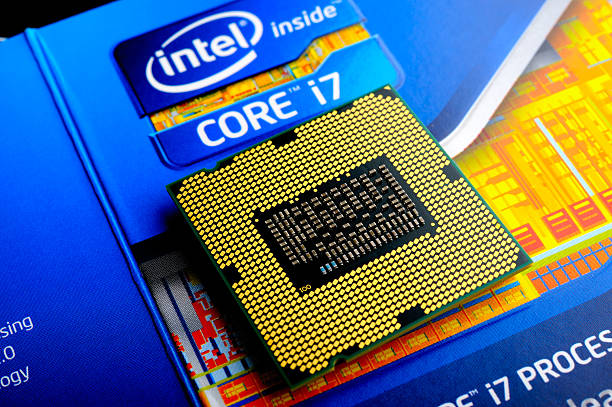Intel Rapid Storage Technology (RST) is a technology developed by Intel that helps enhance the performance and reliability of a computer’s storage system. Designed for systems with multiple drives, Intel RST offers advanced features for managing data, improving storage performance, and ensuring data protection. Whether you’re using traditional hard drives (HDDs) or solid-state drives (SSDs), Intel RST can optimize how your data is stored and accessed.
At its core, Intel RST is designed to take advantage of RAID (Redundant Array of Independent Disks) configurations, which allow multiple storage drives to function as a single unit. This provides faster data access, improved reliability, and protection against potential hardware failures.
How Does Intel Rapid Storage Technology Work?
Intel RST utilizes RAID technology to combine multiple drives into a single storage system, enhancing performance, redundancy, and storage efficiency. By doing this, Intel RST allows for:
- Faster Data Access: When data is spread across multiple drives, read and write operations can occur simultaneously, resulting in faster speeds.
- Enhanced Data Protection: By configuring drives in specific RAID setups, Intel RST can protect your data from potential drive failures.
RAID Configurations Explained
Intel RST supports various RAID levels, each designed to offer a balance between speed, redundancy, and storage capacity. Here’s a quick breakdown:
- RAID 0: Increases performance by spreading data across multiple drives, but there’s no redundancy.
- RAID 1: Provides redundancy by mirroring data on two drives, but at the cost of halved storage capacity.
- RAID 5: Balances speed and redundancy, requiring a minimum of three drives.
- RAID 10: Combines the speed of RAID 0 and the redundancy of RAID 1, requiring at least four drives.
Key Features of Intel Rapid Storage Technology
1. Data Protection
One of the primary benefits of Intel RST is its ability to protect your data. Whether you’re a business or an individual, ensuring that your data is safe from hardware failures is crucial. Intel RST ensures redundancy through RAID configurations, keeping your data secure in case of drive failures.
2. Enhanced Storage Performance
Intel RST significantly improves the speed of read/write operations by using RAID technology. The faster your data can be accessed, the better the overall performance of your system.
3. Fast Recovery Options
In the event of a drive failure, Intel RST allows for quick recovery, minimizing downtime. Its built-in redundancy features ensure that your data can be restored quickly, getting your system back to full operation.
RAID Levels Supported by Intel RST
Intel RST supports multiple RAID levels, allowing users to choose the one that best fits their needs.
RAID 0
RAID 0 offers high performance by striping data across multiple drives, but it lacks redundancy. This is best for users who prioritize speed over data protection.
RAID 1
RAID 1 provides redundancy by mirroring data across two drives, ensuring that if one drive fails, the other can take over seamlessly.
RAID 5
RAID 5 is a balanced option, offering both speed and redundancy. It requires at least three drives and is ideal for users who need a mix of performance and data protection.
RAID 10
RAID 10 combines the benefits of RAID 0 and RAID 1, offering both speed and redundancy. It requires at least four drives and is suitable for users who need the best of both worlds.
System Requirements for Intel Rapid Storage Technology
Before installing Intel RST, it’s essential to check whether your system meets the required specifications.
Supported Intel Chipsets
Intel RST is supported on a range of Intel chipsets, typically found in most modern motherboards.
Supported Operating Systems
Intel RST is compatible with various versions of Windows, but it’s essential to check for the specific compatibility based on the chipset you’re using.
Installation Guide for Intel Rapid Storage Technology
Installing Intel RST is relatively straightforward, especially if you’re familiar with setting up hardware or RAID configurations.
How to Install Intel RST
- Download the latest Intel RST software from Intel’s official website.
- Run the installer and follow the prompts.
- Restart your system once the installation is complete.
Configuring RAID in Intel RST
After installing the software, you can configure RAID by entering the BIOS/UEFI settings during startup and selecting your preferred RAID level.
Intel RST for SSDs: Benefits and Optimization
Why Use Intel RST with SSDs?
Intel RST can significantly improve the performance of SSDs by enabling faster data access and better management of storage resources.
Optimizing SSD Performance with Intel RST
By using Intel RST, users can optimize their SSDs to ensure faster boot times, quicker file transfers, and more efficient storage management.
Advantages of Using Intel RST
Intel RST offers numerous benefits, including:
- Faster Data Access: RAID configurations improve data access times.
- Improved System Responsiveness: Your system becomes more responsive, especially during heavy workloads.
- Reduced Latency: Intel RST reduces the time it takes for your system to access files, leading to smoother performance.
Common Issues and Troubleshooting Intel RST
Installation Errors
Sometimes, installation errors can occur due to incompatible hardware or software. Always ensure your system meets the necessary requirements before installing Intel RST.
Compatibility Problems
Some users may encounter compatibility issues with older hardware or unsupported operating systems. Check for any updates or patches that may resolve these issues.
RAID Configuration Issues
If you experience problems configuring RAID, ensure that all your drives are correctly connected and detected by the system.
Conclusion
Intel Rapid Storage Technology is an essential tool for anyone looking to improve the performance and reliability of their storage system. By utilizing RAID configurations, Intel RST provides faster data access, enhanced protection, and greater system efficiency. Whether you’re using HDDs or SSDs, Intel RST can optimize your storage for both personal and professional use.
FAQs
- Is Intel RST necessary for SSDs?
While not strictly necessary, Intel RST can significantly improve SSD performance by optimizing data access and management. - Can I use Intel RST with a single drive?
Yes, but the benefits of RAID, such as redundancy and faster performance, will only apply if you have multiple drives. - Does Intel RST work with non-Intel chipsets?
No, Intel RST is designed specifically for Intel chipsets. - How do I update Intel RST drivers?
You can update drivers by downloading the latest version from the official Intel website and following the installation instructions. - Is Intel RST compatible with Linux?
Intel RST is primarily designed for Windows, but some Linux distributions may offer limited support through alternative methods.










